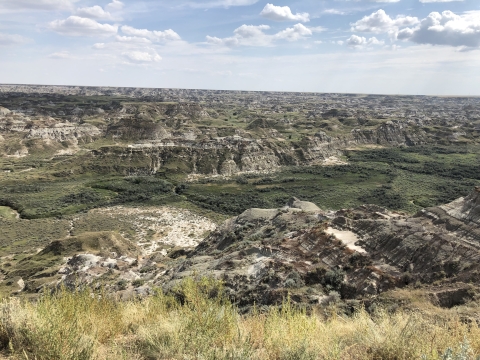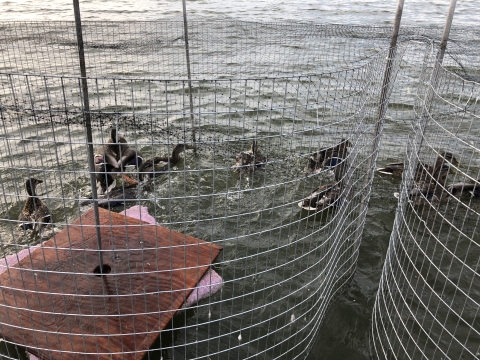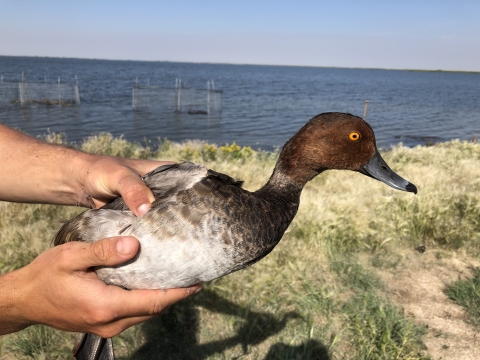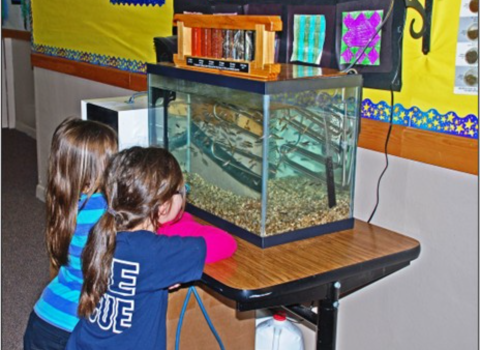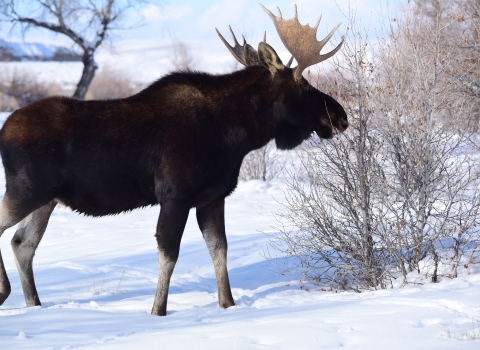Ducks like water. Ok, that’s probably not a surprise to anyone, but that means when there is a drought, ducks really are limited in where they can go. In turn, this effects our ability to trap and band ducks tremendously. Unlike the eastern Canadian prairies that had abundant spring rains fill up the wetland basins in 2022, the western prairie is still stuck in a drought. In Brooks, Alberta, on the southern Canada prairies, the available water has shrunk to irrigation reservoirs, and even those are only half-full. This forces ducks to congregate together in fewer locations, and also reduces the abundance of birds available to trap.
Returning to the prairies, and Brooks in particular, after two years away during COVID, was a shock as it looked so different than 2019. Our crew scoured the local area looking for ducks, and we have found some, but not the numbers we’ve typically seen. In addition to the drought, the other primary weather factor is heat. Birds are just not as hungry in hot weather as they are when it’s cold, which signals that fall migration is near. This year highs have been above 34C (94F) everyday expect the last few. Despite these obstacles, our crew worked hard to catch as many birds as we could – to track migration routes, determine harvest rates, and contribute to population models that determine harvest opportunities.
This year our crew consisted of myself and three National Wildlife Refuge staff, Jennifer Froehly (Upper Mississippi River National Wildlife Refuge), Kirsten Schmidt (Two Rivers National Wildlife Refuge), and Samuel Vassallo (Audubon National Wildlife Refuge). We are always fortunate to have knowledgeable crews that are interested in learning more about waterfowl, and grateful to have the help. The crew worked hard to find the ducks in such hot, dry conditions, and we were successful, capturing over 800 birds! Although the conditions were challenging we had fun and contributed to continental waterfowl management.


